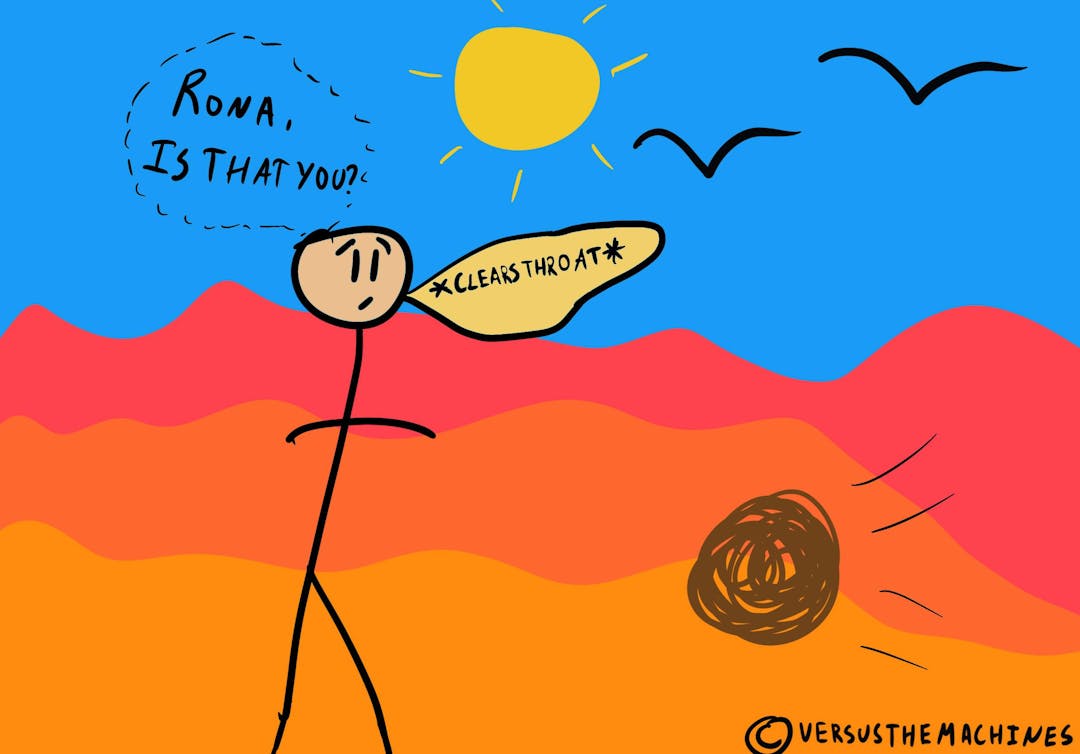Why We Need More Than Just a Nudge
Call it a bout of myopia or a lack of imagination, but it did not occur to me two months ago — watching the lockdown of some 57 million people in Hubei — that we would all soon find ourselves homebound, too.
The world has ceased its normal operation. Even as a profound anxiety over an uncertain future prevails, the greatest contribution most of us can make is simply to stay home, wash our hands, be kind to each other online. A small and selfless sliver of the population — nurses and doctors, grocers and restaurateurs, factory workers and delivery drivers — quietly keeps society open and moving. For the rest of us, life is on something like a pause.
Self-isolation, the watchword of the day, has quickly moved from recommendation to requirement. Almost all affected countries, or localities therein, have instituted some form of mandatory social distancing. But we did not end up here overnight. While Italy moved into lockdown on the 9th of March in an effort to contain the virus’s rapid spread, here in the UK the government opted instead to issue “very strong advice” for people to avoid crowded public venues. The next day, life in my London neighborhood kept moving: the tube and buses ran, the pubs’ pints poured. It would take ten more days for the government to formally call for closures.
The UK’s range of responses has illustrated both the potential contributions, and the crucial limitations, of behavioral science in policy-making. I’ve highlighted three main lessons therefrom on how to best use behavioral science in crafting public policy:
Behavioral Science, Democratized
We make 35,000 decisions each day, often in environments that aren’t conducive to making sound choices.
At TDL, we work with organizations in the public and private sectors—from new startups, to governments, to established players like the Gates Foundation—to debias decision-making and create better outcomes for everyone.
#1: You can only nudge so far
Nudges — the popular term for measures that steer people towards a desired outcome without limiting their choices — are not the right tools for wholesale changes.
While recognizing the importance of social distancing, the UK kept a laissez-faire manner in its initial response, seemingly telling its citizens: here’s what you should do, but it’s up to you. In line with behavioral economics’ founding principles of libertarian paternalism [5] — or so-called ‘regulation for conservatives’ [1] — the government eschewed heavy-handed mandates, hoping instead to nudge the public toward its desired outcome of social distancing.
A similar strategy of suggested, but not enforced, isolation has characterized much of the US response as well. Yet — as reflected in scenes from still-crowded restaurants and beaches — simply suggesting people stay home does not always work. Part of the problem in the US and the UK seems to be the overall inconsistency in messaging. For example, Canada has also been slow to enact outright bans on movement, but has maintained a strong and clear message (‘go home and stay home’) throughout. In order to harness the considerable power nudges do have, we must clearly and consistently articulate our desired outcome. When done properly, such policies can provide an important middle ground between request and requirement.
Yet — even with a clear point — it is too difficult to nudge an entire population to fundamentally change their daily behavior. By way of example, in Washington state, which has one of the country’s worst outbreaks, initial pleas for people to shelter in place were deemed ineffective, and a formal ban on social gathering (backed by fines and criminal penalties) was necessary to keep people at home. Since then, a number of US states and nearly all European countries have instituted enforceable limitations on their citizens’ movements.
Such a response is, by any metric of policy intervention, extraordinary. Indeed, a government-enforced lockdown is “likely the last step” democratic states can take. And of course, as with any sweeping use of government power to limit citizens’ rights, there has been criticism of these restrictions.
Yet, at present, the best public health information we have tells us that drastic measures of social isolation are necessary to suppress the virus’s spread. It should be left to public health experts and epidemiologists, not policymakers (or behavioral scientists), to debate the accuracy of these analyses.
The point is, if such a radical change in behavior is the stated goal of governments, they must shove, not nudge, their citizens into compliance.
#2: Check, then share, your evidence base
More broadly, the UK’s strategy apparently rested in part on fear of behavioral fatigue — or the idea that people can only change their behavior for so long, and will eventually revert to the norm. If there was a limited window in which self-isolation policies could work, they surmised, better to save it for when it would be most crucially needed, as the spread approached its inflection point.
Yet, in response to this policy, more than 600 UK-based behavioral scientists penned an open letter to the government, urging it to share the evidence on which its approach was based, or else to scrap it altogether. Whilst there is indeed some evidence of media fatigue [2] in the uptake of preventative behaviors against influenza, uptake is also known to be correlated with perceptions of risk. Thus, given the increased risk of this outbreak relative to the normal flu, it is debatable how well such studies apply to the present moment. As the letter’s authors put it, it seems likely that people’s behaviors would correlate more directly with how serious they believe the situation to be — so a message of “carrying on” could be counterproductive.
The AI Governance Challenge
Ultimately, it is unclear how well predictions of behavior based on normal times will hold up in this environment. It is also unclear how robust the evidence for behavioral fatigue is. We should all be glad when policymakers engage with academic research, and base their responses on evidence rather than ideology. But it’s also important to be transparent about what evidence is being used, and how it will be applied.
#3: Use behavioral science where it works
When the time came to announce the shift to a formal lockdown, signs summarizing the government’s new coronavirus message were front and center: Stay at home, Protect the NHS, Save Lives. This type of clear and concise language is critically important to communication during crises. Indeed, a working paper summarizing behavioral insights to help fight COVID-19, notes that effective crisis communication “involves empathy and promoting useful individual actions.” [4] The new messaging does both: it calls on our empathy to look out for our peers providing healthcare on the frontlines, as well as those who might be affected by the virus’s spread; and it tells us what we can do to accomplish this — stay home!
This is where behavioral science is most effective: in helping with the rollout of wide-reaching policies. As two of the field’s founders put it, “behavioral economics should complement, not substitute for, more substantive economic interventions.” [3] If governments want to keep their citizens home, they’ll need to rely on traditional economic solutions — fines and penalties for adverse behaviors — to accomplish it. But if they want insights on how to best get the public to buy in, well, behavioral science has a lot to say about that.
All the tools we’ve got
With its focus on preserving people’s agency over their decisions, behavioral science is simply incompatible with a policy that requires us to do something — it lacks the necessary enforcement mechanisms. It is rather a means of presenting options such that people choose the best option for themselves.
Yet, there is still an important role for behavioral science in this fight. Too often the choice between behavioral and traditional policy solutions is framed as an either/or, when — as economics Nobelist Richard Thaler writes — we should instead make use of all the tools and insights available to us.
In the coming months, as we move from this period of mandated isolation into something more similar to normal life — or, as one highly informative analysis calls it, as we move from the hammer to the dance the dance — it will be critically important to keep practicing preventative behaviors. Even when the lockdowns are lifted, we will need to continue washing our hands, keeping our distance, offering elbows when we greet. For promoting these and other desired outcomes, nudges no doubt still yet have time to shine.
Photo by Brian Wangenheim
References
[1] Camerer, C., Issacharoff, S., Loewenstein, G., O’Donoghue, T., & Rabin, M. (2003). Regulation for Conservatives: Behavioral Economics and the Case for “Asymmetric Paternalism”. University of Pennsylvania Law Review, 151(3), 1211-1254.
[2] Collinson, S., Khan, K., & Heffernan, J. M. (2015). The effects of media reports on disease spread and important public health measurements. PloS one, 10(11).
[3] Loewenstein, G., & Ubel, P. (2010). Economics behaving badly. The New York Times, 14.
[4] Lunn, P., Belton, C., Lavin, C., McGowan, F., Timmons, S., & Robertson, D. (2020). Using behavioural science to help fight the coronavirus (No. WP656). Economic and Social Research Institute (ESRI).
[5] Thaler, R. H., & Sunstein, C. R. (2003). Libertarian paternalism. American Economic Review, 93(2), 175-179.
About the Author
Andrew Lewis
Andrew is a writer and behavioral scientist focused on belief construction and how people evaluate new information. He is a PhD candidate in Politics at the University of Oxford, and a doctoral researcher at its Centre for Experimental Social Science (CESS). He was previously at Carnegie Mellon University where he worked at the BEDR Policy Lab and Center for Behavioral and Decision Research (CBDR), and was a research and teaching assistant to George Loewenstein.





